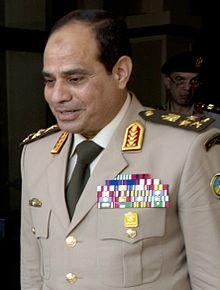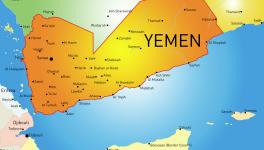Three Card Monte: Egyptian Style
After 30 years of servitude to a Hosni Mubarak regime that empowered the rich and the ruling classes, Egyptians chose revolt as the supreme agent of change. With revolutions come passion, dreams of a better life and violence. But above all else, a change is sought to replace an unjust condition.
Leading these hopes and dreams was a unique tech-savvy generation. Yet three years later an autocrat of the highest order has just become the president of the republic. How did these young revolutionary voices succumb to leadership, yet again, by a military man? What was the undoing of the revolutionary camp? Was it a plan by the military complex or the ancien regime that torpedoed the revolutionary camp? Is it, perhaps, the lack of political know-how of young revolutionaries that has left them outside the halls of power? The Egyptian dilemma is a triangulation of all the previously stated dynamics. The conundrum we face is best summarized as follows: How did Egypt shift from a didactic paradigm to a despotic Egyptian stew?
To be able to look forward we must first look back on January 24, 2011, when Egypt — unbeknownst to most analysts, as well as domestic and foreign intelligence agencies — stood at the mouth of an explosive volcano. Egypt's politics before the revolution pitted a dormant and disorganized opposition against Mubarak's state and its various labyrinthine arms that was for decades in full control of the domestic theater. Mubarak’s regime had become a private pantheon for Egypt’s wealthy elite. While the wealthy lived in guarded compounds strewn with swimming pools, tennis courts and other lavish accouterments, half of the population languished on a national average of US$2 a day. Such wealth disparity, coupled with a tragicomic fraudulent national election in 2010 and a short-term trigger of the Khaled Said murder, galvanized Egyptian young people into action.

Image Courtesy: en.wikipedia.org
"The central question remains: How did Sisi position himself as an autocrat with the guise of a savior in spite of the bloodshed, imprisonments, and torture?"
January 25 dawned with tens of thousands streaming angrily into various Egyptian cities on one side and Mubarak‘s Central Security Forces pushed to confront them on the other. By February 11, the death toll had reached 862 and thousands more had been injured, but Mubarak had finally surrendered power. Egyptians rejoiced; freedom was on their doorstep, but alarming signals worried those who chose to listen to that faint tenor. An army man, Mubarak, had surrendered to that very army.
The Egyptian populace itself mistook the deployment of the Armed Forces, starting on January 28, as unconditional support for the people’s cause. Understandably, they could not differentiate between the feelings of the soldiers and officers, and the agenda of the Supreme Council of the Armed Forces. In essence, troop movement was a political gambit, meant to buy time for the generals. On an emotional level it could be called the January 25 Revolution, but intellectually it was a political gambit by SCAF to hold on to power. There were others with eyes on governance, chiefly the Muslim Brotherhood, a group in prime position to snatch power due to superior organization and appealing ideology. The metric had been in place all along: The gun and the beard had taken hold of the car, while the revolutionary camp slept at the wheel.
Although highly inefficient coordinators of the transitional period, SCAF had an important angle: strategic thinking. The very definition of strategy is the understanding that you can lose a battle but win the war. It was precisely this thinking, which allowed the old generals to surrender the seat of power to a man such as Mohamed Morsi, with the full knowledge that his inexperience would spell political doom. Five months later the gambit paid off. In mid-November, Morsi issued a supra constitutional edict that all but gave him formal dictatorial powers; ostensibly, his decisions would be immune. On November 22, 2013, British newspaper The Telegraph screamed: “Mohamed Morsi grants himself sweeping new powers.” This statement left an indelible imprint on the Egyptian landscape. A new pharaoh was in the making. “The constitutional declarations, decisions and laws issued by the president are final and not subject to appeal,” said the then presidential spokesperson Yasser Ali. What followed this naively calculated constitutional coup d’état were mass demonstrations at the presidential palace that saw thousands of Egyptians shout-down the Morsi move. Eight were killed (in clashes with Morsi's supporters), but so was Morsi’s tenure. Morsi had naively given the generals a pretext to move against him.
For Morsi, there would be no negotiation or compromise. “The price can be my life,” he said on July 1, 2013, after the huge June 30 demonstrations that demanded his ouster. Many feared civil war, but Defense Minister Abdel Fattah al-Sisi maneuvered for Morsi’s removal. While Morsi remained insulated by his group, Sisi ordered the presidential guard to arrest the president. The Islamist dream was dead in the water.
The Sisi era had begun. Multiple massacres followed Morsi's ouster as it became clear that the goal was not merely the removal of a man from power, but rather the evisceration of his political group: The Muslim Brotherhood. The now infamous Rabea al-Adaweya dispersal marked a historical low point for Egypt. According to the independent watchdog WikiThawra, nearly 1,000 Egyptians were killed in the massacre. In an August 19 press release, Human Rights Watch declared that the dispersal was the “most serious incident of mass unlawful killings in modern Egyptian history.” Some expected public outrage, but instead there was nothing but mass hypnosis. Sisi, the military, and a resurgent security apparatus galvanized public opinion. With public acquiescence the numbers of dead rose to 3,248 by January 31, 2014, according to WikiThawra. Thousands more were injured, and more than 20,000 were arrested by January 13, 2014.
The central question remains: How did Sisi position himself as an autocrat with the guise of a savior in spite of the bloodshed, imprisonments, and torture? The answer is multifaceted, but comes down to the strategic sensibility of a man immersed in realpolitik. Having been rocked by an ocean of instability, Egyptians sought a figure that could provide stability, security and economic hope. Revolutionary ideals, notions of democracy and protesting as an avenue of change were shoved to the side. Propelled to the forefront were ideals of the police state, a language in which Sisi excels. It is simple: Sell the idea that protest, the very same protest that brought Sisi and the military to power, was counterproductive to the well-being of the nation, and you could hit two birds with one stone: the Islamist and revolutionary camps. Once those centers of anti-SCAF and coup rhetoric were paralyzed politically and/or thrown into Egypt’s expansive networks of jails, the rest would be dependent on Sisi’s charisma and his ability to seduce the average Egyptian with notions of a flourishing economy in a stable Egypt.
No less important to Sisi's ascendance to power is the political decimation of alternatives. The Brotherhood was labeled a terrorist organization, rendering it powerless. The revolutionary camp has seen its leading figures arrested, and it suffers from a lack of organization and an inability to connect to Egypt's main street. Sisi’s main opponent in the presidential elections, Hamdeen Sabbahi, is perceived by many to be a political dinosaur, espousing the socialist agenda of a bygone era.
Elections have ended and Sisi is president. In reality, these “elections” were swept by Sisi on July 3, 2013, the day Morsi was overthrown. What Sisi does after his election will determine if he will have a seat of power or, like his predecessors, a seat in prison.
Courtesy: madamasr.com
Disclaimer: The views expressed here are the author's personal views, and do not necessarily represent the views of Newsclick
Get the latest reports & analysis with people's perspective on Protests, movements & deep analytical videos, discussions of the current affairs in your Telegram app. Subscribe to NewsClick's Telegram channel & get Real-Time updates on stories, as they get published on our website.
























